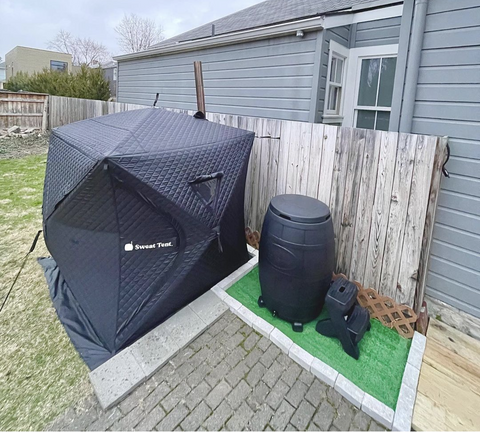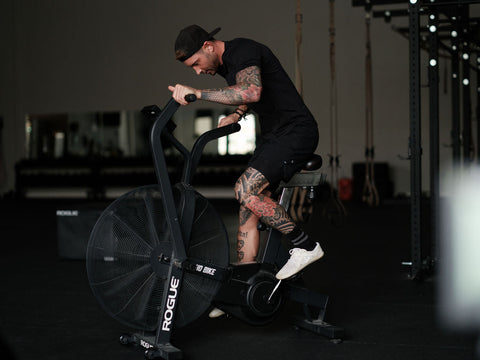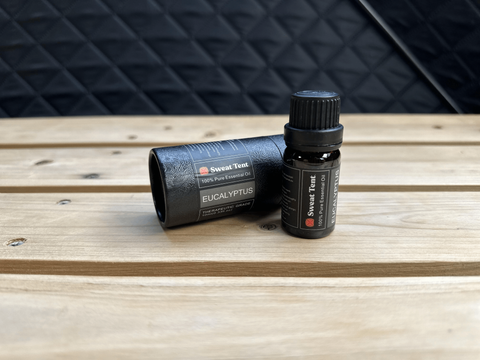For individuals in search of innovative methods to augment their health and wellness, contrast therapy—namely through sauna and cold plunge—has gained momentum in recent years. However, it’s far from a wellness fad. Deliberate heat and cold exposure, otherwise known as “Nordic Cycle” therapy, is a centuries-old ritual with a myriad of restorative benefits and a feeling of euphoria many come to crave after their first experience.
As research continues to shed more light on this burgeoning wellness regimen, celebrated athletes, researchers, and health gurus alike are embracing this procedure with enthusiasm due to its reported benefits on both the mental and physical aspects of well-being.
In this article, we present five potential benefits of cold plunge and sauna use. Read on to uncover the surprising ways sauna and cold plunge can enhance your physical and mental health. But first, let's get to grips with the fundamentals of contrast therapy.
What is Contrast Therapy?
Contrast therapy involves the strategic alternation between heat and cold. It typically consists of sessions in a sauna or hot water immersion (HWI), followed by immersing oneself in a cold plunge, pool, or shower. This type of therapy harnesses the power of temperature contrast to stimulate the body's physiological responses, offering potential benefits to the mind and body in various ways.
The Science Behind Contrast Therapy
Contrast therapy works by inducing a process called vasodilation and vasoconstriction. When exposed to heat, blood vessels expand (vasodilation), allowing increased blood flow to the muscles and organs. Conversely, exposure to cold causes blood vessels to constrict (vasoconstriction), redirecting blood flow to vital organs to maintain core body temperature.
These alternating responses enhance circulation, stimulate the lymphatic system, and trigger various other mechanisms that promote healing and well-being. Here are five more benefits of sauna and cold plunge.

5 Benefits of Sauna and Cold Plunge
Benefit 1: Enhanced Athletic Performance
Contrast therapy can be a game-changer for athletes and fitness enthusiasts. The alternating hot and cold temperatures stimulate blood flow, which aids in muscle recovery, reduces inflammation, and enhances nutrient delivery to tissues. This may lead to improved athletic performance, increased endurance, and reduced muscle soreness.
Benefit 2: Accelerated Muscle Recovery
Another potential benefit of cold plunge and sauna is its ability to speed up the recovery process. The contrast between hot and cold temperatures is suggested to help flush out metabolic waste products from the muscles, reducing inflammation and promoting faster healing. Athletes and individuals engaged in intense physical activities can experience quicker recovery times and a decreased risk of overuse injuries.
Benefit 3: Mental Clarity and Relaxation
Contrast therapy doesn't just show promising results for the body; it may also offer a profound impact on mental well-being.
While deliberate heat exposure helps lower cortisol levels and reduce feelings of stress, deliberate cold exposure stimulates the release of endorphins, providing a natural mood boost, mental clarity, and increased alertness. This combination can leave you feeling calm, rejuvenated, and revitalized, both physically and mentally.
Benefit 4: Detoxification and Skin Health
Contrast therapy has also been shown to play a crucial role in promoting detoxification and improving skin health. Sweating in the sauna helps eliminate toxins from the body, while the cold plunge or shower tightens the pores and stimulates collagen production, improving skin elasticity and reducing the appearance of blemishes.
Benefit 5: Boosted Immune System
Regular practice of contrast therapy may also be able to enhance immune function. The alternating temperatures stimulate the lymphatic system, which is responsible for removing toxins and pathogens from the body. Improved blood circulation, coupled with reduced stress levels, strengthens the immune system, making it more resilient against common illnesses.
RELATED: How Long Should You Stay in a Sauna for Optimal Health Benefits?
How to Safely Combine Sauna and Cold Plunge
To ensure a safe and effective contrast therapy session, consider the following guidelines:
- Start with a warm-up: Begin with a few minutes in a sauna to prepare your body for the temperature contrast.
- Alternate between hot and cold: Spend approximately 10-15 minutes in the sauna, followed by a quick cold plunge or a cold shower for 1-2 minutes.
- Gradually increase the duration: As you become more accustomed to contrast therapy, you can extend the time spent in both the hot and cold phases.
- Stay hydrated: Drink plenty of water before, during, and after contrast therapy to stay properly hydrated.
- Listen to your body: Pay attention to any discomfort or signs of overheating, and adjust the temperatures or durations accordingly. Rest when needed.
Incorporating a Sauna and Cold Plunge Regimen Into Your Routine
To experience the full benefits of contrast therapy, consider incorporating it into your wellness routine. Aim for 2-3 weekly contrast therapy sessions, allowing your body adequate time to rest and recover between sessions.
Precautions and Considerations
While contrast therapy is generally safe for most people, it's essential to take some precautions:
- Consult with a healthcare professional if you have any underlying health conditions.
- Avoid contrast therapy if you're pregnant, have high blood pressure, or suffer from cardiovascular problems.
- If you have any skin conditions or injuries, consult with a dermatologist or healthcare professional before engaging in contrast therapy.
Conclusion
Contrast therapy, combining sauna and cold plunge, is a unique and effective approach to improving physical and mental well-being. With potential benefits ranging from enhanced athletic performance and accelerated muscle recovery to mental clarity, detoxification, and boosted immune function, contrast therapy has much to offer.
By incorporating this practice into your routine safely and consistently, you can unlock the potential benefits of sauna and cold plunge therapy. For more facts about sauna and cold plunge therapy, check out our FAQs below. To discover even more benefits of deliberate heat exposure, or to learn more about how our home sauna tent can help optimize your health from anywhere, visit the Sweat Tent blog today!
Sauna and Cold Plunge FAQs
-
Who can benefit from combining cold plunge and sauna?
Contrast therapy can benefit a wide range of individuals, including athletes, fitness enthusiasts, and those seeking enhanced physical and mental well-being. However, it's important to consult with a healthcare professional before starting contrast therapy, especially if you have any underlying health conditions.
-
What are the optimal temperatures for sauna and cold plunge?
For a dry sauna, which is often wood-fired, exposing oneself to high temperatures in a dry environment, typically between 80°C to 100°C (or 176°F to 212°F), is considered optimal. This range can provide an effective and intense experience. However, it's essential for beginners to start at lower temperatures and gradually build up. If at any point you feel uncomfortable or dizzy, it's a signal to leave the sauna and cool down.
The temperature for cold plunge pools or ice baths should typically be between 10°C and 15°C (or 50°F to 59°F). This range is sufficient to induce vasoconstriction and stimulate your nervous system without causing extreme discomfort. If the cold feels overly intense, it's advisable to warm up.
The goal of contrast therapy is not to push your body to its limits, but rather to stimulate beneficial physiological responses. Remember, every individual is unique and what's optimal for one may not be for another. Therefore, it's crucial to listen to your body and adjust the temperatures to what feels best for you. As always, consultation with a healthcare professional before starting a contrast therapy routine is advisable to ensure safety and effectiveness.
-
How often should I combine cold plunge and sauna?
The frequency of contrast therapy sessions depends on individual preferences and goals. Starting with 2-3 sessions per week is a good baseline, allowing your body sufficient time to recover between sessions. You can adjust the frequency based on how your body responds and consult with a healthcare professional for personalized recommendations.
-
Are there any risks associated with a cold plunge and sauna routine?
While cold plunge and sauna use are generally safe, there are some considerations to keep in mind. Individuals with underlying health conditions, such as high blood pressure or cardiovascular problems, should consult with a healthcare professional before attempting contrast therapy. Pregnant women and individuals with certain skin conditions or injuries should also seek professional guidance. It's essential to listen to your body, practice within your comfort zone, and make adjustments as needed.






